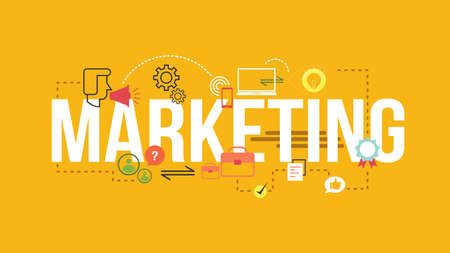Leveraging Influencer Collaborations
Why Influencer Marketing Matters in 2025
In the US digital marketplace, influencers continue to shape consumer decisions. American shoppers trust recommendations from real people, especially those who share their interests and values. By collaborating with US-based influencers and micro-influencers, brands can connect authentically with specific audiences, boost credibility, and drive digital product sales.
Choosing the Right Influencers
Not all influencers are created equal. While mega-celebrities have massive reach, micro-influencers (with 10K-100K followers) often offer higher engagement rates and a more loyal community. Here’s a quick comparison:
| Influencer Type | Follower Count | Main Benefit | Typical Cost |
|---|---|---|---|
| Mega-Influencer | 1M+ | Massive exposure | High budget required |
| Macro-Influencer | 100K-1M | Wide but targeted reach | Moderate-high cost |
| Micro-Influencer | 10K-100K | High engagement, niche audiences | Affordable, often negotiable |
| Nano-Influencer | <10K | Personal connections, grassroots buzz | Low cost or product exchange |
How to Build Effective Influencer Partnerships
1. Set Clear Goals and KPIs
Decide if you want brand awareness, increased traffic, direct sales, or user-generated content. Share these goals with your influencer partners.
2. Find Influencers Who Match Your Brand Values
Use platforms like Instagram, TikTok, and YouTube to identify creators whose audience aligns with your target US consumers. Look at their content style and follower interactions for authenticity.
3. Offer Creative Freedom with Guidance
The best results come when influencers can speak in their own voice while highlighting your digital product’s benefits. Provide key messages but encourage them to share genuine experiences.
4. Track Results and Optimize Campaigns
Monitor performance using affiliate links, discount codes, or UTM parameters. Adjust your approach based on what’s working—whether that means shifting platforms or trying new content formats like Stories or Reels.
Examples of Effective Collaboration Ideas
- Tutorial videos showing real-life use of your digital product (e.g., online courses, software tools)
- Exclusive discount codes for an influencer’s audience to create urgency and track sales impact
- Joint live streams or webinars where influencers interact directly with potential customers and answer questions about your product
- User-generated content contests encouraging followers to share how they benefit from your digital offering, boosting organic reach and trust among peers
The right influencer collaboration strategy can open doors to new audiences and build lasting relationships with US consumers in 2025.
2. Personalized Email Marketing Campaigns
Segmenting US Consumer Audiences
One of the most effective ways to reach American customers is by segmenting your email list. Instead of sending the same message to everyone, divide your audience based on interests, buying behavior, age, or location. For example, you can create different segments for first-time buyers, repeat customers, or those who have shown interest in specific digital products.
| Segmentation Criteria | Examples |
|---|---|
| Purchase History | First-time vs. returning customers |
| Location | East Coast vs. West Coast users |
| Interests | E-books vs. online courses fans |
Crafting Customized Email Content
After segmenting your audience, focus on creating email content that feels personal and relevant. Use their name, recommend products based on past purchases, or send special offers for their birthday. Americans appreciate brands that understand their needs and communicate with a friendly tone. Keep subject lines clear and catchy—something like “Hey Sarah, Ready for Your Next Adventure?” works better than generic greetings.
Email Personalization Tips
- Use customer first names in the subject line and greeting.
- Highlight products they’ve viewed or bought before.
- Add local flavor by mentioning holidays or events relevant to their region.
Utilizing Automation Tools for Better Engagement
Email automation tools are game-changers for digital product sellers in the US. Platforms like Mailchimp, Klaviyo, and ActiveCampaign let you schedule emails based on user actions—like signing up, making a purchase, or abandoning a cart. Automated campaigns save time and make sure your messages reach the right people at the perfect moment.
| Email Automation Example | Purpose |
|---|---|
| Welcome Series | Introduce your brand to new subscribers |
| Abandoned Cart Reminders | Encourage users to complete their purchase |
| Loyalty Rewards Emails | Thank repeat customers and offer exclusive deals |
Key Takeaways for 2025
- Segment your audience for more targeted messaging.
- Create emails that feel personal and relevant to each group.
- Automate your campaigns to boost engagement and increase conversions among US consumers.

3. Social Proof and User-Generated Content
In the US market, trust is everything—especially when it comes to buying digital products online. American consumers want to know that what they’re purchasing actually works, and there’s no better way to reassure them than by showing real feedback from real users. This is where social proof and user-generated content (UGC) become powerful tools for your marketing strategy in 2025.
Why Social Proof Matters
Social proof means using the opinions and experiences of other customers to influence potential buyers. When people see positive reviews, testimonials, or even just photos and videos from actual users, they feel more confident making a purchase. In a world full of choices, Americans often rely on these signals to decide which digital products are worth their money.
Types of Social Proof That Work Best
| Type of Social Proof | Description | How It Builds Trust |
|---|---|---|
| Customer Reviews | Star ratings and written feedback left by buyers | Shows honest opinions and highlights product value |
| Testimonials | Short stories or quotes from satisfied customers | Adds personal touch and relatable experiences |
| User Photos & Videos | Real-life images or clips showing the product in use | Makes your digital product look authentic and effective |
| Influencer Endorsements | Recommendations from trusted personalities in your niche | Lends credibility and reaches wider audiences |
| Case Studies & Success Stories | Detailed accounts of how your product solved specific problems | Demonstrates real results with clear examples |
Encouraging User-Generated Content (UGC)
User-generated content is all about getting your customers involved. Ask them to share their experiences on social media, post screenshots or demo videos, and tag your brand. Consider running contests or giveaways to motivate participation. You can then feature the best content on your website or marketing channels for extra impact.
Tips for Leveraging Social Proof in 2025:
- Add review sections: Make it easy for buyers to leave feedback right after purchase.
- Showcase testimonials: Display short quotes from happy customers throughout your landing pages.
- Create highlight reels: Use Instagram stories or TikTok compilations of user content to build excitement.
- Partner with micro-influencers: Americans often trust smaller influencers who seem more genuine.
- Email follow-ups: Ask recent buyers for reviews or user photos a week after their purchase.
The Takeaway: Let Your Customers Be Your Best Marketers!
If you want to win over US consumers in 2025, let them see the success of others first. Social proof and UGC will help you build credibility, boost conversions, and create a loyal community around your digital product brand.
4. Optimizing for Mobile and On-Demand Consumption
Why Mobile-First Matters in the US Market
In 2025, American consumers expect everything at their fingertips, literally. Over 85% of US adults use smartphones daily, making mobile-first marketing a must for any digital product business. If your website, app, or digital content isn’t optimized for mobile devices, you risk losing customers before they even get started.
Key Reasons to Go Mobile-First
| Reason | Impact on Digital Sales |
|---|---|
| Faster Browsing & Purchasing | Simplifies the buying process, reducing cart abandonment. |
| On-the-Go Access | Allows customers to buy anytime, anywhere—think subway rides or coffee breaks. |
| Personalized Experience | Push notifications and geo-targeting help deliver relevant offers instantly. |
| Social Media Integration | Makes it easy to share and promote products where people already spend time. |
Adapting Digital Products for the On-Demand Lifestyle
The US market loves convenience. People want instant access to what they buy—whether it’s streaming a video course or downloading an eBook. Adapting your digital products for on-demand consumption isn’t just a nice-to-have; it’s a necessity.
How to Fit the On-Demand Culture
- Instant Delivery: Ensure your digital products are available immediately after purchase—no waiting required.
- User-Friendly Interfaces: Design clean, simple interfaces that work seamlessly on smaller screens.
- Bite-Sized Content: Break up courses, guides, or videos into shorter segments so customers can learn or enjoy in small chunks during their busy day.
- Offline Access: Offer download options so users can access content even without internet connections—a big plus for travelers or commuters.
- Flexible Payment Options: Integrate Apple Pay, Google Pay, and other mobile-friendly payment solutions to speed up checkout.
Quick Tips: Mobile & On-Demand Checklist
- Test your sales page on different devices (iPhone, Android, tablets).
- Simplify navigation—customers should find what they need in two taps or less.
- Add “buy now” buttons near every product description for quick action.
- Send real-time alerts for special deals or new releases through push notifications.
5. Utilizing FOMO and Limited-Time Offers
One of the most powerful motivators for US consumers in the digital space is FOMO—Fear Of Missing Out. In 2025, leveraging this psychology will be even more effective as digital buyers seek unique experiences and instant gratification. Here’s how you can use FOMO, flash sales, and exclusive deals to drive quick action and boost your digital product sales:
Why FOMO Works in the US Market
Americans love being part of the latest trends and don’t want to feel left out, especially when it comes to tech products, online courses, or premium digital downloads. When you create a sense of urgency and exclusivity around your digital products, customers are much more likely to make impulse purchases.
Ways to Create FOMO and Incentivize Quick Action
| Strategy | Description | Example |
|---|---|---|
| Flash Sales | Offer steep discounts on digital products for a very short time (24-72 hours). | “48-Hour Only! Get 50% off our bestselling online course.” |
| Exclusive Access | Provide early or limited access to new content or features for a select group. | “Join our VIP list for first dibs on our new app launch!” |
| Countdown Timers | Add visible countdown clocks to product pages or emails to highlight urgency. | “Only 3 hours left to grab this deal!” displayed on your landing page. |
| Limited Quantities | Announce that only a certain number of licenses or spots are available. | “Only 100 eBook downloads left at this price!” |
| Loyalty-Only Deals | Send special offers exclusively to existing customers or email subscribers. | “This secret discount is just for our newsletter subscribers.” |
Best Practices for Using FOMO in Digital Marketing
- Be Authentic: Make sure your limited-time offers are real—US consumers value honesty and transparency.
- Highlight Social Proof: Show how many people have already purchased or are currently viewing the deal.
- Simplify Checkout: Remove friction from the buying process so interested buyers don’t hesitate and miss out.
- Leverage Email & SMS: Send real-time reminders about expiring deals directly to your audience’s inboxes or phones.
- Create Repeat Events: Run monthly flash sales or special “members-only” days to build anticipation and loyalty.
Key Takeaway: Make It Urgent & Exclusive
The right mix of urgency (limited-time offers) and exclusivity (VIP access, member deals) taps directly into the American consumer mindset. By making customers feel like they’re part of something special—and that time is running out—you’ll encourage faster decisions and higher sales conversions for your digital products in the US market.


